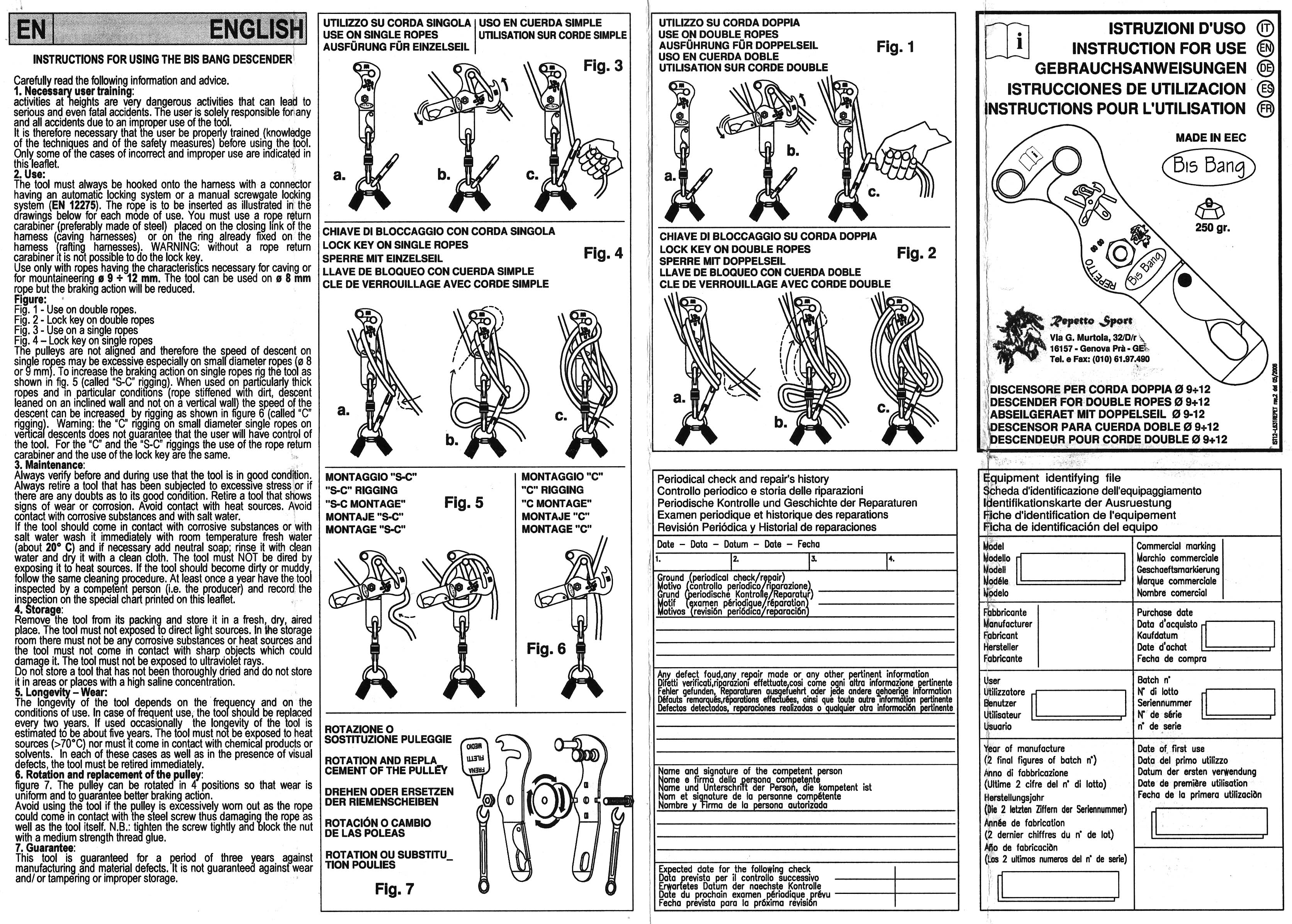Technical Details
 I acquired my Repetto Bis-Bang from Expé-Spelemat
in 2008. The Bis-Bang is 177 mm. tall, 56 mm. wide, and
41 mm. thick. Mine weighs 247 g.
I acquired my Repetto Bis-Bang from Expé-Spelemat
in 2008. The Bis-Bang is 177 mm. tall, 56 mm. wide, and
41 mm. thick. Mine weighs 247 g.
The two side plates are made of 3.1 mm. aluminum. The
lower ends of the side plates are bent to converge at the attachment
point. The attachment point on the fixed side plate is enlarged
to a 22 mm. high by 13 mm. wide hole located 3 mm.
off center. A similar hole on the pivoting side plate has been
cut open on the narrow side, so the side plate resembles a hook.
The opening of the hook is covered by a spring loaded, stamped
steel, sheet metal guard which is attached to the side plate with a semi-tubular rivet.
The lower bollard is turned aluminum with four rectangular
projections keep it from rotating on the fixed side plate. It
is drilled and tapped then bolted to the fixed side plate with
8 mm. bolts. Shoulder nuts lock the bollard in place and
also retain the pivoting side plate. The bollard is 27.3 mm.
long, making the Bis-bang suitable for doubled ropes. The bollard
has a turned U-groove. The diameters of the ends of the bollard
are 41.2 mm., and the center diameter is 33 mm.
The upper bollard is turned stainless steel. It is riveted
to the fixed side plate. This bollard has two U-shaped grooves.
The end at the side plate is 14.9 mm. in diameter, the two
grooves are 8 mm., the wide point between the grooves 12.0 mm.,
and the outer end at the swinging side plate 14.8 mm. Outside
this, there is a groove to retain the closed side plate.
The auxiliary bollard is also turned stainless steel, and riveted
to the fixed plate. It is 14.9 mm. at the side plate, tapers
in 3 mm. to 8 mm., maintains this diameter for 20.5 mm.,
and then expands to 15 mm. at the swinging plate. Outside
this, there is a groove to retain the closed side plate.
The pivoting side plate pivots on the shoulder nut holding
the lower bollard and has a slot to allow clearing grooves in
the upper bollard and auxiliary bollard.
The pivoting side plate is printed with an open book-with-an-"i" icon, an illustration showing how the
descender is threaded, "REPETTO," "Bis Bang"
in an ellipse, and an utterly indecipherable icon that might be
mistaken for a map (or a Mayan head glyph?). Actually, the icon is a profile
of a man’s face.
Double-rope bobbins are rare, and I haven't seen one commercially
available since I acquired my Petzl Double-rope
Bobbins in 1981. The Bis Bang lower bollard has a single
rope groove similar to the one on the Petzl
Version A. I prefer to have two rope grooves (as in the
Petzl Version B). When a double
rope bobbin is rigged for extra friction during a single rope
rappel, the two groove design has the advantage of keeping the
rope paths separated on the lower bollard, where the directions
of rope motion may be opposite.
The Bis Bang’s upper bollard is considerable smaller than
normal, which subjects the rope to a much sharper bend. While
this might not matter much for thin climbing lines, it is hard
on stiff, tightly-woven caving ropes like those preferred by many
cavers here in the U. S. A.

For far more content, use a larger monitor and a full-width window.
Hundreds of cell phone users complained and asked me to for a simpler, mobile friendly site. In particular, they wanted me to limit each page to a small number of pictures and minimize my use of text. This new site provides what they asked for.


